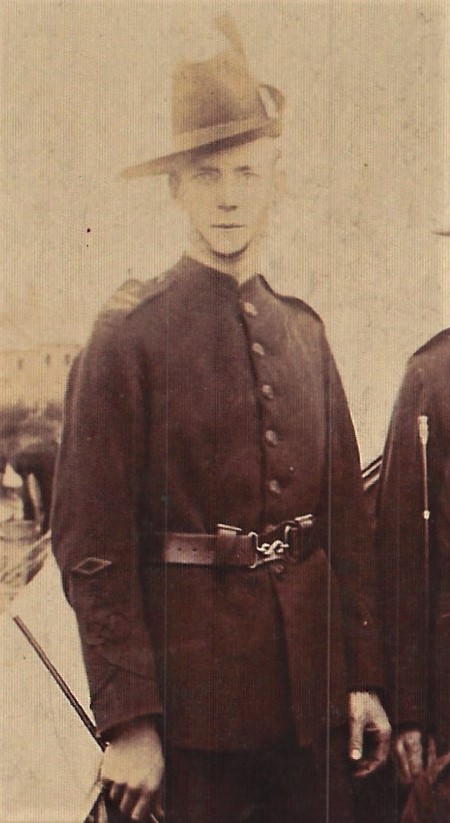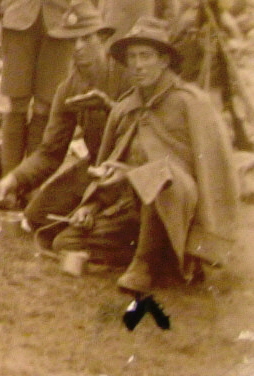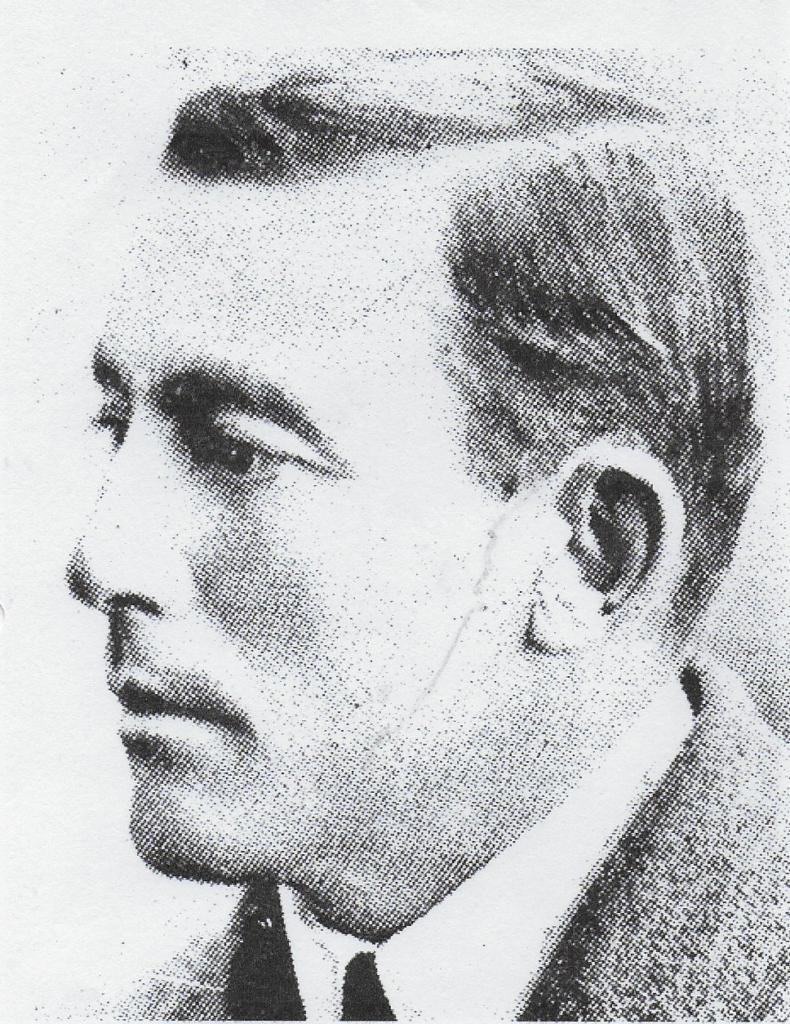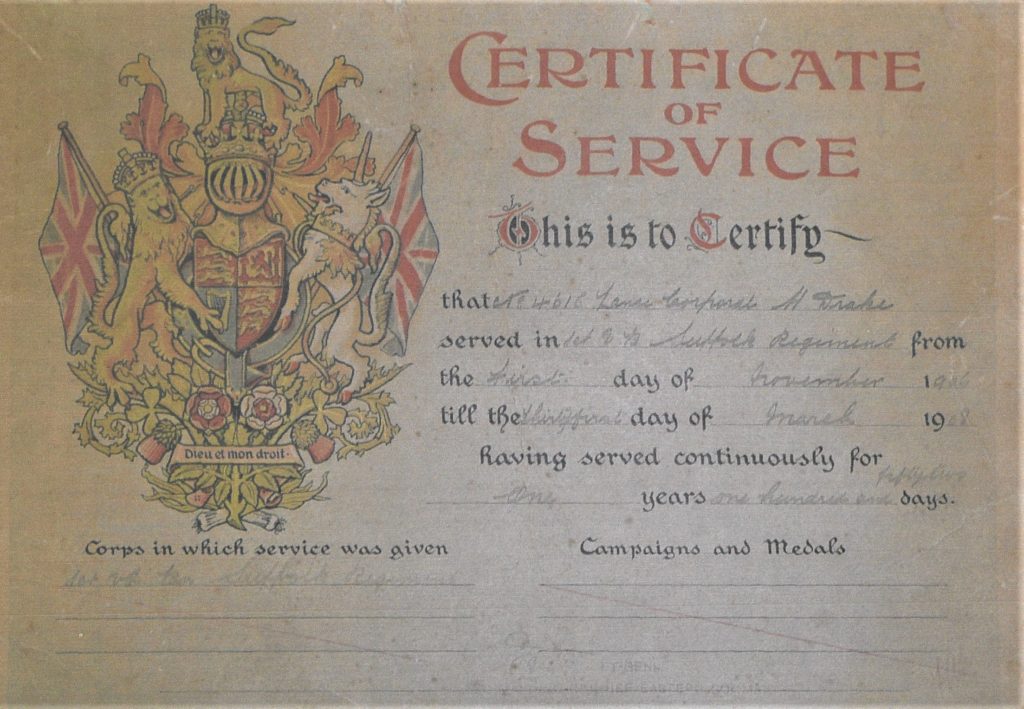ALBERT CHARLES DRAKE
SERVED AS
11279 PRIVATE DICK RODING
2ND BATTALION CANTERBURY REGIMENT
NEW ZEALAND EXPEDITIONARY FORCE
WHO DIED OF WOUNDS
19TH SEPTEMBER 1916
AGE 33 YEARS
Some years ago, as I decided to research those men who gave their lives during World War One with their names inscribed on the Halesworth War Memorial. One of my first points of reference was to view the online Suffolk Roll of Honour for the town, that had been compiled in 2007. On this site, the full list of those remembered on the memorial is shown in alphabetical order with a short history for sixty of the sixty-nine names listed. I then decided that I would try to confirm the names and service of those men who had not been identified. Of these the most difficult and intriguing story to be uncovered was that of A. Drake. This would lead me on to a journey of discovery that began in our sleepy little Suffolk market town and led to the other side of the world, in fact to the South Island town of Picton in New Zealand.
Albert Charles Drake was born in Halesworth on the 21st January 1879. He was the first child of Alfred, a coach painter, and his wife Ellen (née Rumsby). Just two years later, at the time of the 1881 census, the family, now joined by another young son, Herbert, were living at the Broadway, Halesworth. After leaving school around 1893, it is believed that a young Albert found work in one of the retail businesses in the town. On the 1st August 1898, he married Ellen Jordon who hailed from the neighbouring village of Wissett. At the time of the 1901 census, they were found to be living with their two-year-old daughter, Ethel, in Bungay Road with Albert’s occupation listed as being that of a Commercial Traveller dealing in leather goods. It would have been around this period that, with his younger brother Herbert, he enlisted in the Halesworth Company of the 1st Volunteer Battalion Suffolk Regiment. By the time of the next census in 1911 the family were now living with Albert’s parents at No.2 Bungay Road, with both he and Ellen listed as being involved in the running of a grocery shop. This was the last piece of evidence of his pre-World War 1 association with the town that could be found.
Following on from a check of the Suffolk Roll of Honour, I then attempted to find Albert on the records of the Commonwealth War Graves Commission website where, although there are over twenty actual British casualties of his name listed, not one of them proved to be the Halesworth Albert. Sometime later, my luck changed, with a chance find in the town’s museum archive of a photograph that had been donated some years before it showed a group of New Zealand soldiers wearing their distinctive lemon squeezer hats, while written on the reverse it mentions Albert Drake in training at Featherstone camp on the country’s North Island. To the front, one soldier is indicated by the use of a drawn arrow. A search of the New Zealand military records, which are a superb source of research, proved fruitless in finding an Albert Drake, I broadened my research to find any soldier born in Halesworth during the correct period. This luckily produced one soldier, a Private Dick Roding with the service number of 12/1356. On reading through his records, the mystery was solved, with a fascinating story beginning to emerge. It appears that, possibly while Albert was employed as a travelling salesman, as shown on the 1901 census, he had met a lady named Ethelwyn Mabel James, a spinster who was a partner in a company of drapers. Their shop was situated in the small Essex town of Black Notley, that lies to the north of the county town of Chelmsford. Over a period of years their romance must have blossomed, as on his service records she is listed as being his wife, having married at the Hackney Registry Office in North East London on the 14th August 1912. A search of the relevant marriage records did not reveal them under their assumed or actual names. Having left his wife and daughter behind in Halesworth and no doubt in fear of being found out, a little over two months later they set sail as passengers on the S.S. Cassel from the Belgian port of Antwerp on the 30th October 1912, bound for Melbourne, Australia. Why they did not remain in Australia is not known, but on the New Zealand election roll for the district of Wairau in 1914, they are to be found living in the coastal town of Picton with Richard (Albert) listed as employed as a gardener.
On the 11th January 1916 Dick, as he was known on all of his military records, enlisted into the New Zealand Expeditionary Force. After completing four months of basic training, he then joined a draft of the 12th Reinforcements on board H.M.N.Z.T.S. Ulimarea bound for Egypt. It sailed from Wellington on the 1st May 1916. Five weeks later, they landed at Suez where a further seven weeks of training was carried out before they embarked on the last leg of their journey, arriving at Southampton on the 7th August 1916. On disembarking, they then travelled to Sling Camp located on the vast military training ground of Salisbury Plain in Wiltshire. Whether the British-born soldiers were then allowed to visit relatives over the next few weeks is not known, but if so, would Dick (Albert) have travelled to Halesworth?
On the 3rd September 1916, after travelling halfway around the world, men from the 12th Reinforcements finally landed in France where Dick was posted to join the 2nd Canterbury Regiment with the regimental number of 11729. It was during the month of September that the New Zealand Division became involved in their first major action on European soil, although they had suffered an estimated two thousand eight hundred fatal casualties the previous year while serving as part of the A.N.Z.C. forces during the Gallipoli landings. These losses from a country whose population amounted to a little over a million souls in 1914 had been devastating news for the people of those islands, but sadly there were many more to come. Less than two weeks after joining his battalion, they were preparing to take their part in the third phase of the Battle of the Somme. Beginning on the 15th September, a total of eleven British Divisions including the New Zealanders combined to take part in a major assault on the German front line that covered a distance of several miles in the area of Flers-Courcelette. It was during this battle that the new British wonder weapon ,‘The Tank’, was unleashed on the enemy. This led to the capture of several sections of the German line and rear areas; with the New Zealanders, supported by a single tank, capturing and holding the village of Flers. On consolidating their positions, it was found that several members of the 2nd Canterburys were reported to be missing, with Dick being one of these. His records show that the following day, the 16th September, he had been found and admitted into the No.6 Canadian Field Ambulance suffering with wounds to his chest and both legs. He was then transferred to the 44th Casualty Clearing Station where he died of his wounds on the 19th September, just four days after forming up for his first and only battle. After his death Dick was laid to rest in the Puchevillers British Military Cemetery, France where he remains to this day.
News of Dick’s death would have been confirmed to his nominated next of kin, Ethelwyn, at their home in Picton, where she would have then been entitled to a widow’s allowance. On the 5th May 1919, Ethelwyn arrived back in England where she then returned to Somerset, the county of her birth. How the information regarding his death came to his true wife’s notice is not known. On Albert’s records dated the 7th September 1921, his true name is confirmed and that of Ellen his Halesworth bride, who at this time was now to be found living and working in Shepherds Bush, West London. After the truth of Albert’s identity became known, who benefitted from any financial awards that were owed for the loss of his life is not known. Within his New Zealand army records is a copy of the receipt from April 1923 for the award of his bronze Memorial Plaque bearing the name of Dick Roding. This has been signed for by his legal wife Ellen. The whereabouts of the plaque today is not known. A further note regarding the award of his medal entitlement of the British War and Victory medals suggests that they were never claimed.
Both ladies involved in this tale never remarried. On the British register of 1939, Ellen can be found living with her and Albert’s daughter, Ethel, now herself married and living in Hayes, Middlesex. Ethelwyn died in 1946. Her probate records show that at her death she still used either or both surnames of Roding and James (her maiden name).
In today’s world this story could have more than a ring of truth to it, with New Zealand just a twenty-five hour flight away, whereas in the early years of the 20th century, this drama with all its twists and turns might well appear to be a work of fiction!

in the uniform of the Suffolk Volunteers
A copy of Herbert’s discharge certificate from 1908




